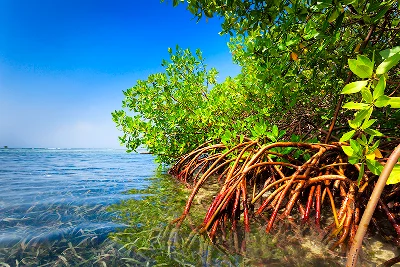A mangrove is a shrub or tree that primarily thrives in coastal saline or brackish water environments. These resilient plants typically grow along coastlines and tidal rivers, predominantly in equatorial climates. Mangroves possess unique adaptations that enable them to withstand harsh conditions that would be lethal to most other plant species. These adaptations involve efficient oxygen intake and salt removal mechanisms. The term "mangrove" is also used to describe the tropical coastal vegetation composed of these species. Taxonomically, mangroves exhibit considerable diversity, resulting from convergent evolution in various plant families. They can be found worldwide in tropical and subtropical regions, and even in some temperate coastal areas. The majority of mangrove coverage lies within 5° of the equator, although they extend between the latitudes of 30° N and 30° S. The emergence of mangrove plant families can be traced back to the Late Cretaceous to Paleocene epochs, and their widespread distribution can be attributed, in part, to the movement of tectonic plates. The discovery of the oldest-known mangrove palm fossils dates back 75 million years.


